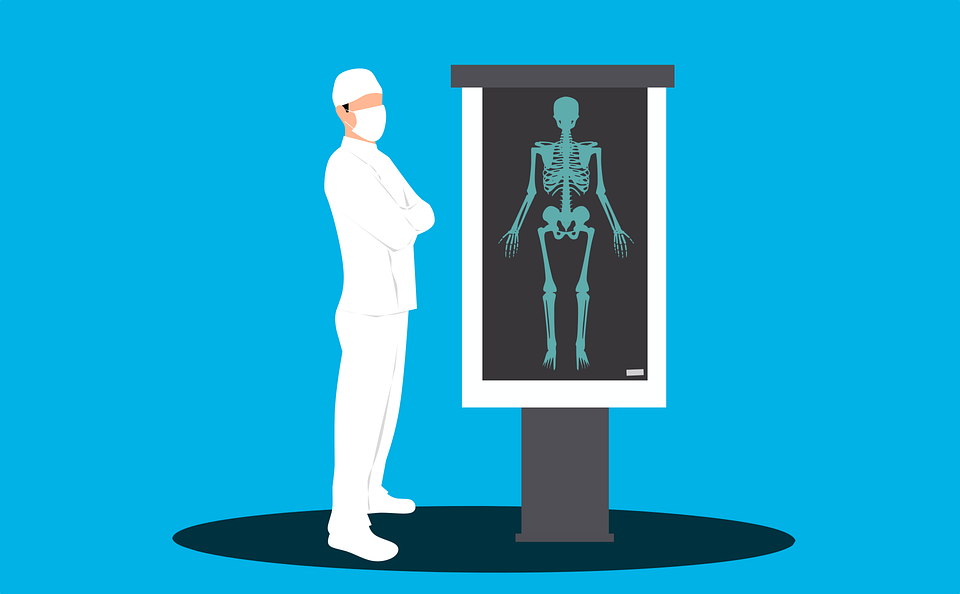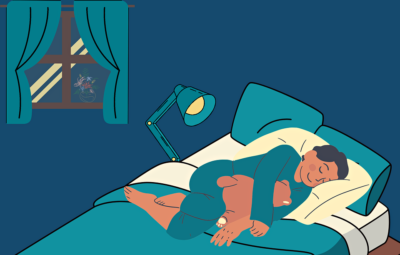Nutrition for healthy bones is important knowledge. Our bones help to support and protect our organs, as well as providing a store for calcium and phosphorous minerals. However, many people do not pay attention to their bone health until they are diagnosed with osteoporosis or have a fragility fracture later in life. Good nutrition is important at all stages of life in order to have strong and healthy bones. You can help reduce your risk of developing osteoporosis later in life by taking steps to ensure you are getting bone building nutrients during childhood and adolescence, as well as the adult years.
Although bone is strong and rigid, it is also a living tissue that can continually regenerate itself. New bone is constantly being created while old bone is being destroyed. There are two types of bone cells: osteoclasts and osteoblasts. Osteoclasts break down bone tissue, while osteoblasts build new bone tissue. The primary function of osteoclasts is to break down and reabsorb old bone cells. Osteoblasts are responsible for generating new bone cells to replace them. The body produces new bone faster than it breaks down old bone during youth.
As an adult, you continue to remodel your bones, but you generate new bone cells more slowly than you break down existing ones. The deterioration of bone tissue caused by osteoporosis occurs when old bone cells are broken down faster than they are being replaced. Osteoporosis weakens bones, making them likely to break. The best way to have strong bones later in life is to maximize bone accumulation during adolescence.
BONE HEALTH IN CHILDHOOD
During adolescence, bones grow rapidly until they reach their maximum mass. The peak bone mass is the highest weight, strength and density that your bones can reach according to your genes. The rate of bone building during adolescence is greater than at any other time in life. It reaches its peak in early adulthood and then starts to decline later in life. Almost all young people will have reached their maximum bone density by the time they turn 30. Although genetics have a large influence on how much bone mass someone will have, lifestyle choices like diet and physical activity also play a role in how much bone mass is accumulated during growth.
If you don’t have optimal peak bone mass, you’re more likely to get fractures later on. The figure illustrates how diet and lifestyle choices during adolescence can affect peak bone mass.
NUTRITION FOR HEALTHY BONES
To have peak bone mass, you need to be physically active and have a good diet. Many studies have concluded that if children don’t have enough nutrition, particularly calcium and vitamin D, this can negatively affect their bone health. In addition, malnutrition from eating disorders has been shown to affect bone mass development. In individuals with anorexia nervosa who are young, bone loss can be detected after only six months of illness and deficits can remain even after weight gain recovery. Nutrient deficiencies that occur with anorexia result in reduced bone formation, as well as increased bone resorption.
A marked decrease of bone formation markers is seen in normal healthy young people who fast for as little as four days. Achieving peak bone mass cannot be emphasized enough. Achieving peak bone mass during the adolescent years could significantly delay the onset of osteoporosis by 13 years, reducing the risk of osteoporotic fractures later in life.
We all slowly begin to lose bone mass by the age of 40. However, just like adolescents trying to achieve peak bone mass, adults can avoid severe bone loss that leads to osteoporosis by having quality nutrition and regular exercise. The study found that postmenopausal women who ate a Mediterranean diet were less likely to suffer from hip fractures. The well-known Mediterranean diet emphasizes eating fish, vegetables, fruits, legumes, whole grains, nuts, seeds, and olive oil. Meat, cheese, and sweets are very limited. This study shows that a balanced diet is more important for bone health than any one nutrient.
There are certain nutrients that play a role in bone health.
Calcium
Calcium is contained in bones and is necessary for bones to grow. Health professionals often tell use to make sure we get enough calcium because it is important for our health.
Most people need to consume between 600-1200 milligrams of calcium per day through their diet. Although all people need nutrients to support growth, teenagers may need more due to growth spurts.
Here are some things to keep in mind about calcium:
- Does your body know it should use that calcium? Though calcium is important, it’s not enough to build a strong skeleton on its own. It needs hormonal signals (such as enough vitamin D) and mechanical signals (like impact and loading) to tell it where to go.
- Can your body absorb that form of calcium? We can eat plenty, but our bodies have to be able to use that calcium.
- Is that calcium in balance with other nutrients? Recent evidence suggests that we don’t benefit from supplementing more than 1000 mg of calcium daily — and in excess, supplemental calcium can actually be harmful.
- Are you eating other foods, or taking other medications, that could interfere with calcium absorption?
Vitamin D
Vitamin D, often called the “sunshine vitamin,” has many health benefits, including strengthening bones.
Vitamin D helps the body to create bones and absorb calcium.
If our blood vitamin D levels are too low, we won’t absorb as much calcium. Your blood vitamin D should ideally be between 30-40 ng/ml (75-100 nmol/L). (If you’re unsure, get tested.)
Most people would benefit from taking a vitamin D supplement to ensure that D levels are good. The amount of vitamin D you need depends on where you live, how much time you spend in the sun, and how much vitamin D is in your blood.
Lipids can cause issues with the liver and skin, which may be more common in people with higher body fat.
Protein
Protein makes up 20-30% of bone mass. Protein intake can also affect growth hormones and growth factors in the body, which can help improve bone health.
Protein is an essential part of our diet and we need to make sure we consume enough of it.
Some worry that high protein intake causes calcium loss. Although calcium losses can be indicative of osteoporosis, they are not a direct measure. Increasing your protein intake will also result in increased calcium absorption. This means that what is lost could be gained and vice versa.
A diet that is high in both calcium and protein is the best for maintaining healthy bones. To make sure you’re getting all the nutrients you need, look for a variety of plant and animal-based protein sources.
Phosphorus
A protein-rich diet is a phosphorus-rich diet. And too much phosphorus may harm bone health. This can happen because too much phosphorus can stop the body from making enough active vitamin D. Vitamin D is essential for bone health.
Listing the pros and cons, too much and too little phosphorus is not good for bone health. It is important to find a balance in order to be successful.
Most people get their dietary phosphorus from phosphate-based additives in processed foods, as well as from poultry, meat, milk, and cheese.
Additives seem to make phosphorus more absorption for the body than if it came from whole foods. Therefore, it is not a good idea to consume a lot of soft drinks that contain phosphoric acid. Though phosphorus from grains, nuts, and seeds is not as easily absorbed as other forms, it is still an important part of a healthy diet. The phosphorus found in these foods is often in the form of phytic acid.
Bottom line? If you consume a balanced diet with whole foods, you will not likely experience any negative effects from phosphorus.
Vitamins K, C, E
Other vitamins are also essential for bone health. Vitamins K, C, and E, among others, play an important role.
Vitamin K2 aids in directing calcium to where it needs to go. Some foods that contain vitamin K2 are dairy, meat, poultry, and natto, which is a traditional Japanese dish made from fermented soybeans.
Vitamin C helps to lay down new bone. Foods rich in vitamin C include vegetables and fruits.
Vitamin E can help protect bones from damage by free radicals. Some foods that are high in vitamin E are nuts, seeds, dark leafy greens, and tomato sauces.
Vitamin A
Getting too little or too much vitamin A can lead to problems with bone health. People who consume more than 1.5 mg/day of retinol (a form of vitamin A) might have negative effects on their bones. Check your supplements and fortified products.
Dairy products that have been fortified with vitamin A could potentially lead to weaker bones. Again, check labels.
Bone-building and bone-busting foods
Vitamins and minerals are important for bone health. Foods that are good for maintaining strong bones are those that are high in vitamins and minerals. However, some foods should be avoided as they can lead to weak bones.
This article discusses different food groups and how they relate to bone health. It explains that some food groups are necessary for maintaining healthy bones, while others can actually contribute to bone problems.
Vegetables, fruits, beans, whole grains, nuts/seeds
Fruits, vegetables, beans, whole grains, nuts, and seeds all seem to be very beneficial for bones. They contain nutrients that are essential for bone health, including calcium, phosphorus, magnesium, and vitamin D.
This might be due to phytochemicals, specifically flavonoids. Flavonoids may be able to influence bone cell signaling and prevent oxidation.
An example of the power of flavonoids is from research involving dried plums. Many dried fruits are rich in flavonoids, and dried plums are no exception. One study indicated that with all else being equal, adding 10 dried plums per day was very beneficial for bone health. This suggests that dried plums may help to prevent osteoporosis.
There is still unknown exactly how many flavonoids and other phytochemicals exist. In addition, the beneficial effects on bone are more likely to come from the way the nutrients combine in whole foods than from any particular one.
The reason why taking supplements of isolated phytochemicals is not as effective as eating whole fruits and vegetables is probably because phytochemicals work together synergistically.
When it comes to beans, soy has received the most attention from researchers. Its influence on bone health appears to be mixed. This probably depends on how you eat it. Some of the compounds in soy foods could help to prevent bone loss. But the jury is still out on this one.
Acid/base balance
Vegetables and fruits are beneficial not just because of their phytochemicals, but also because they help to preserve our bodies’ optimum acid/base balance. This, in turn, promotes bone health.
There are many potential benefits of an alkaline diet, but one possible benefit is that it could help increase growth hormone levels.
Dairy
Dairy foods are rich in calcium, potassium, and magnesium. They are recommended as bone boosters because they help to build strong bones. If you can handle dairy products without any adverse effects, including them in your diet is a good way to make sure you are consuming enough calcium.
If someone only gets these nutrients from dairy foods, then removing dairy will probably cause them to lose bone mass. If someone is getting the required nutrients for bone health from other sources, then dairy isn’t necessary.
WHY EXERCISE MATTERS
The stronger your skeleton is, the less likely you are to suffer from fractures. Both children and adults who exercise regularly are less at risk of bone loss. Exercises that have an impact on your body, such as power walking, jogging, and racket sports, as well as weight lifting, increase bone density. New research suggests that hopping for two minutes every day can improve bone density in the hip. The importance of preventing osteoporosis lies in taking steps at an early age, as it has no symptoms and is often not discovered until a broken bone occurs. A nutritious diet with a variety of different foods is essential for proper bone development in young people.
Even as we get older, it’s still important to eat right to keep our bones healthy. If you suffer from osteoporosis, you can improve your condition by modifying your diet, lifestyle and starting an exercise regime. This will help to slow down bone loss and in some cases, reverse the damage already done.
Conclusions
Bones are actually pretty complicated. But your strategies don’t have to be.
By following these simple tips, you can help your skeleton stay strong and resilient for life.







